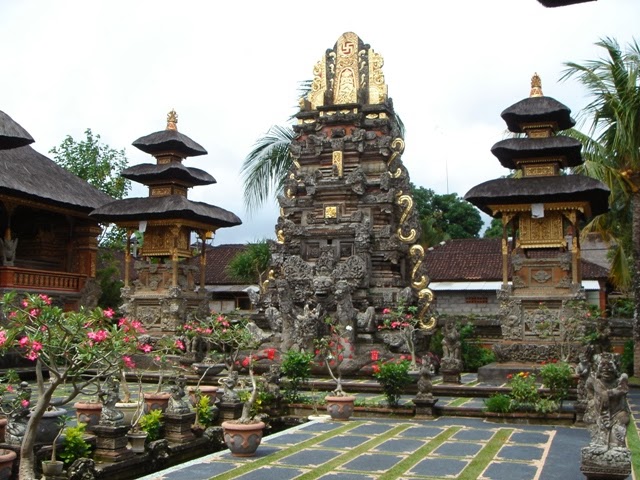
Ubud has a known history back to the eighth century, when the Javanese Hindu priest Rsi Marhandya came to Bali from Java, and meditated at the confluence of the two Wos rivers at Campuan, just west of the modern day town centre. A shrine was established and later expanded by Nirartha, the Javanese priest who is regarded as the founder of Bali's religious practices and rituals as we know them today. At this time the area was a centre of natural medicine and healing, and that is how the name Ubud originated: Ubad is ancient Balinese for medicine.
Central Ubud has three main streets: Jl Raya Ubud, Jl Monkey Forest and Jl Hanoman. At the intersection of Jl Raya and Jl Monkey Forest are Ubud Market, Ubud Palace, and the main bemo stop — unsurprisingly, there's also a near-permanent traffic jam here.
Jl Monkey Forest, which runs south through town to the Monkey Forest, is a built-up area, and home to a wide array of accommodation, art galleries, and cafes, as well a number of local services such as schools, a sports field, pharmacies, and travel agents. Jl Hanoman, which runs parallel to Jl Monkey Forest just to the east, is a bit quieter and makes for more pleasant walking.
To the immediate west and northwest are the villages of Campuan (Tjampuhan, Campuhan) and Kedewatan, home to some of the most upmarket hotels in the whole of Asia, with views over valleys sculpted by the Ayung and Wos rivers.
Directly to the south, past the Monkey Forest and still within a twenty minute walk of the central market, is Padang Tegal which then runs into the southern villages of Nyuh Kuning and Pengosekan, about three km from central Ubud. Directly to the east is the village of Peliatan, and then Teges and Bedulu, home of the ninth century Goa Gajah (Elephant Cave).







